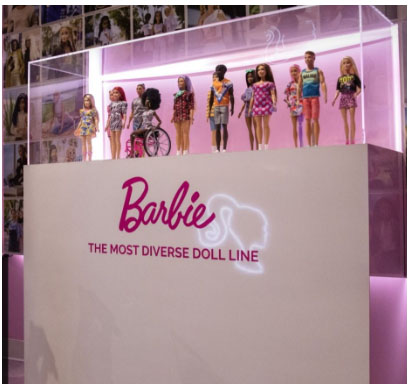Ever since Barbie was announced the internet started making speculations. However these speculations went on to become the talk of the town due to the team’s brilliant marketing strategy. The iconic doll that has captured the hearts of millions worldwide, is not just a toy but a cultural phenomenon. As the movie prepares to make her silver screen debut in the highly anticipated movie launching on July 21, it’s worth exploring the marketing strategy that has made Barbie a lasting symbol of aspiration and inspiration.
Barbie’s Uses Nostalgia to Lure Audience
Barbie has effectively adapted to shifting historical and societal conventions, recreating herself on a regular basis to remain pertinent. Barbie has developed to represent the world’s expanding multiculturalism and inclusion through her varied spectrum of complexions, body shapes, and vocations. The only way to effectively understand this approach is to accept change, connect to your consumers, and adapt your brand to match their wants and desires.

Connect with Consumers Emotions
Barbie managed to connect with the emotions of the audience. Mattel created a world in such a way which inspired girls to strive hard and achieve their goals. The barbie film’s marketing team managed to use that and hooked on the customers through the use of nostalgia. The marketing team focussed on making the consumers reminisce about their childhood with barbie.

Barbie and its Collaborations
Barbie also managed to be the talk of the town through its collaboration. Barbie collaborated with brands like Fossil, Airbnb, Nyx Cosmetics and so many other brands. Even movie theatres came up with barbie themed cup which intrigued the audience and customers even more. So the key takeaway here is to collaborate with relevant influencers and brands which align with your objectives.
Barbie and its Unique Marketing Strategy
The soundtrack was created by Mark Ronson and included songs by Dua Lipa, Tame Impala, Nicki Minaj, and Ice Spice, who sampled the very first Barbie Girl by Aqua. Not only has the film’s outstanding cast, music, and reviews gotten people talking, but so has its marketing effort. Pink billboards with simply the release date of the film have surfaced in places across the world, and a pink Barbie DreamHouse has even emerged in Malibu, which superfans can reserve on Airbnb.

Barbie Gets the Film Critics to Talk?
For BBC Radio 1’s film critic Ali Plumb, the film’s campaign has been everywhere because Mattel – which owns the Barbie brand – are selling more than just a movie.
“What you’re seeing isn’t just a promotion for the film,” he tells BBC Newsbeat.
“It’s for the Barbie brand, for everything pink and the colour.
“So you might think, hang on this marketing is all over the place. And it’s doing so well, I’m seeing it everywhere.”
Another thing Ali thinks has helped the film are the posters, which people could edit themselves into and “encouraged a lot of people to make their own”.
He says Barbie’s marketing campaign is a stark contrast to Christopher Nolan’s Oppenheimer, which is released on the same day.
And while lots of people are planning to watch both on 21 July – in what’s been dubbed Barbenheimer – Ali says Oppenheimer has taken a more traditional approach.
“That’s a movie about the man who helped create the Manhattan Project and the atomic bomb,” he says.
“So you can’t sell toys off the back of that, you can’t sell fishing rods and shirts and hats and whatever random stuff they might be selling – it’s just the movie.”
Concluding Remarks
In conclusion, Barbie has managed to grab everyone’s eyeballs. Its collaborations with all the other brands have fostered other brands to take notes. In short, Barbie managed to give us insights on how to curate the perfect marketing strategy.